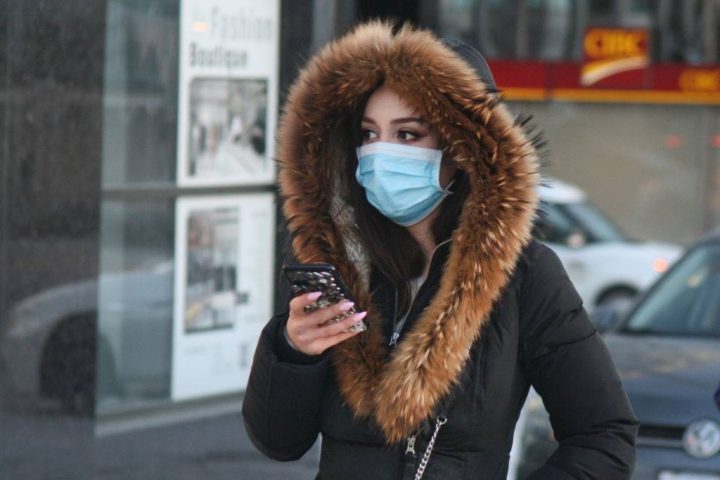It didn’t take long for the world to realize China couldn’t contain COVID-19 after the disease caused by the new coronavirus surfaced in the country late last year.

To combat its spread, China did the impossible by building a hospital in six days, limiting the travel of entire regions and quarantining a city of 11 million people to contain the disease. Yet, it wasn’t enough.

Today, there are more cases outside of China than within its borders, and the virus is showing no signs of slowing down. As the number of COVID-19 cases continues to grow around the world, with outbreaks now reported in about 80 countries, Canada could resort to quarantine and social distancing but, for now, is encouraging residents who have travelled to affected areas to voluntarily self-isolate in an effort to limit the disease’s spread.
“It’s generally believed that up to 75 per cent of the world’s population in some mathematical models could get infected with this,” says Dr. Michael Gardam, an infectious disease expert and chief of staff at Humber River Hospital. “So we’re not even at the end of the beginning yet. We’re still at the beginning of the beginning here.
“This is something which is going to be going on for months, and we will see the slow, continued spread of this virus,” he says.
“I would love to be proven wrong on that, but so far, everything that we’ve seen over the last few months is pointing towards the slow spread of this virus to different countries around the world.”
As of March 5, about 80 countries have reported at least one case of COVID-19, and there are roughly 95,000 cases overall. Canada has reported 34 cases in the country so far, and public health officials say the risk to the public remains low.
Italy, which has reported more than 3,000 COVID-19 cases, has since closed all schools for a 10-day period and announced all sporting events through April will be conducted in front of empty stadiums, including Serie A soccer games. This tactic is called “social distancing,” whereby large gatherings of people are discouraged.
In Japan, where there are 317 confirmed COVID-19 cases, the country’s top baseball league has been playing its spring training games to empty stadiums, and the league has yet to decide if it will start its season the same way or postpone it outright.

Get weekly health news
The Canadian government hasn’t gone that far, but experts believe it is very likely such practices could happen here. After the COVID-19 outbreak first began in the Chinese city of Wuhan late last year, planeloads of Canadians returned home in early February and were quarantined at the Canadian Forces Base in Trenton, Ont., for 14 days until they were medically cleared.
None of those travellers contracted the virus.
The government was able to set up CFB Trenton under the Quarantine Act of 2005, which allows health officials to enforce mandatory medical screening and deem any place, like a house or hospital, a quarantine station. If need be, quarantine can be enforced through strict penalties.
So far, it appears the government is content with asking travellers to self-isolate if they’ve returned home from a country experiencing an outbreak. On its website, the Canadian government asks those who have travelled abroad to monitor their health and contact their local public health authority if they experience symptoms of COVID-19.
Health units across the country have also encouraged residents who feel ill after travelling to affected areas to self-isolate at home, staying inside and avoiding contact with others.
Tom and Marylin Schuck of Weyburn, Sask., were aboard the Westerdam cruise ship with 1,500 other passengers when it departed Hong Kong on Feb. 1 for a 14-day cruise. A single person aboard the ship was suspected of carrying the novel coronavirus, which was enough for health officials to ask the Schucks to self-isolate.
The ship itself was never under quarantine, but ports of call refused to let it dock since the vessel had originated in Hong Kong. The Schucks were eventually allowed off the ship and flew home.

Upon their return, the Schucks say they were told to stay in their home and, if they had to go out, to wear masks and stay away from crowds. Considering what was happening in the world, they agreed, and when their son returned their car to them, he stayed half a block away as a precaution.
“We weren’t quarantined,” says Tom. “It would be different if we had the disease. I don’t know what they would have done if we would have told them: ‘No, we’re gonna go run away right now.'”
But the idea of self-isolation creates several potential problems. What do you do with non-infected people who live in the same house? Are workers forced to take sick or vacation days or, if self-employed, how are they supposed to earn money?
U.K. officials, for example, believe that at the virus’ worst, 20 per cent of workers will be home sick.
Politicians in Nova Scotia and Ontario have brought up these issues, hoping to have them resolved before the outbreak gets worse. Ontario’s NDP has asked the government to eliminate the need to go to a doctor for a note so that potentially infected people stay away from offices, while the Nova Scotia NDP has asked the government to take action on paid sick leave, similar to what happened with the SARS outbreak in 2003.









Comments